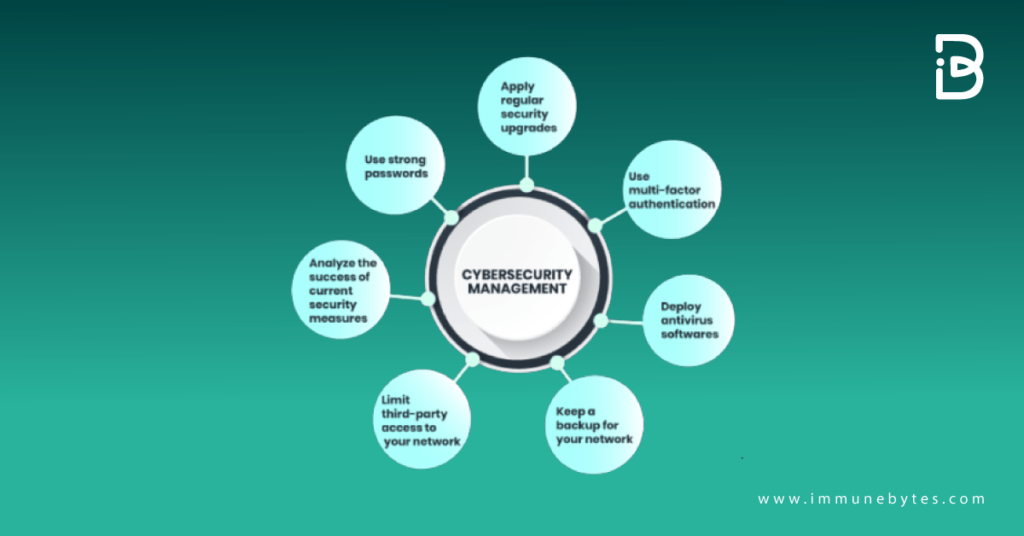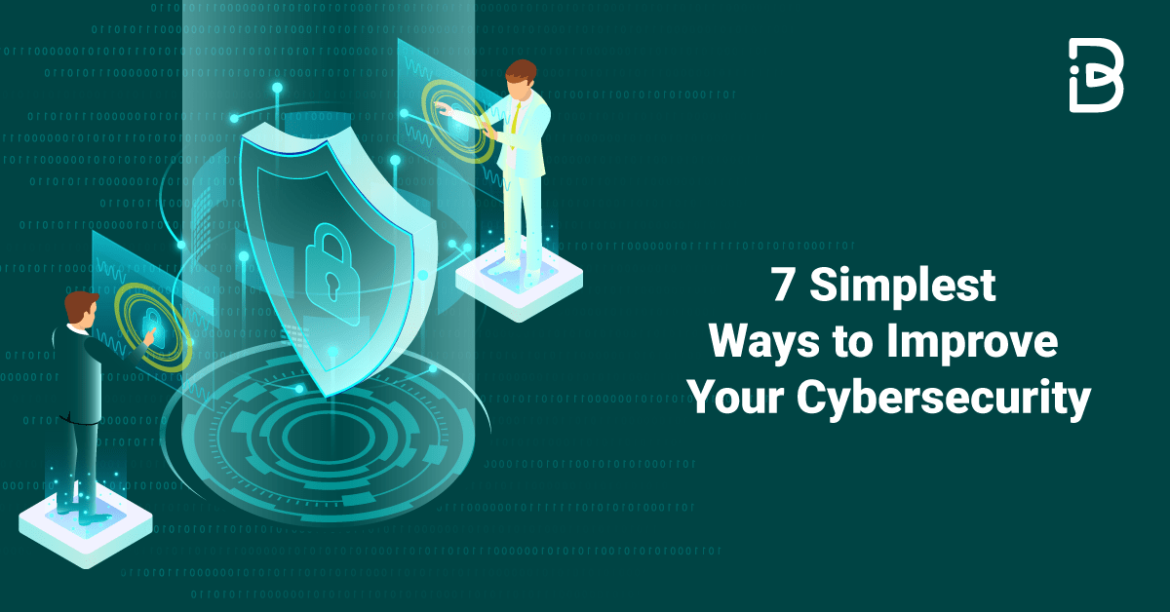Today, every industry, including healthcare, defense, tourism, cosmetics, and more, is moving towards cyberspace. Cybersecurity threats are also high as the world becomes increasingly intertwined with technology.
Like every other industry, the opportunities in IT do not come without risk; indeed, the gravest of these risks are cybersecurity issues.
It is not surprising that cybersecurity threats are among the top hazards to businesses, given that almost all company transactions and interactions take place through our computers and data systems. While the internet gives you access to a more extensive consumer base, it can potentially be a source of fraud and security threats.
In the upcoming blog, we will briefly discuss cybersecurity and seven simple measures you can adopt to make your systems secure seamlessly.
What is Cybersecurity?
Table of Contents
Cyber security is a journey to manage capabilities and exposure to existential and upcoming technological advancements.
It entails realizing that there is a cyber arms race going on. Targeting and managing your investments to address relevant cyber threats includes determining company needs, processes, and the people engaged in your business operations, as well as where your greatest assets and biggest dangers are. Enhancing cybersecurity is a continuous process, not a one-time fix.
Must Read: Traits of Good Cybersecurity Auditor
Ways to Improve Your Cyber Security?
Following are the 7 simple yet effective ways to exponentially decrease the chances of cyber threats.

- Use strong passwords
Do not use easy-to-guess or common passwords, as they usually act as the first line of defense against hackers.
Never use a single password for a number of networks under usage.
Your risk of being a victim of an attack rises if your passwords are apparent to figure out or contain basic corporate information. It would be best if you change your passwords every few months, especially after an employee leaves the organization.
- Apply regular security upgrades
Probably, an essential way of combating vulnerabilities in your system is to apply regular security updates. It usually contains the latest security updates for your system to fight the new threats hovering over cyberspace.
For instance, Ransomware attacks are one of the top threats sieving into cyberspace and tempering its security.
Patching obsolete software, including operating systems and applications, is one of the most crucial cyber security recommendations for reducing the impact of ransomware. Doing this can help close significant security loopholes that hackers use to access your devices.
- Use multi-factor authentication
Using multi-factor authentication acts as an additional security shield for your systems.
For example, setting up two-factor authentication for our Gmail account. This adds an extra layer of information to be entered by the user to prevent hackers from breaching it. Additionally, after entering your username and password, you would be required to input more than two additional authentication methods for multi-factor authentication.
- Deploy antivirus software
Antivirus software may do a lot to keep viruses off of your computer. Antivirus software scans your OS, files, and emails to find and remove dangers.
Antivirus software shields your device from viruses that could corrupt your data, cause it to run slowly or even crash, or let spammers send emails using your account.
Your files and incoming emails are scanned for viruses by antivirus software, which subsequently removes any harmful content. To combat the recently introduced “bugs” that are circulating online, you must keep your antivirus software updated.
- Keep a backup for your network.
Ensuring a wide backup bandwidth for your files and other vital data helps businesses and individuals to retain important information from going missing.
Backup certifies cyber-resilience and minimizes disruption in case of a cyber threat. Making regular backups and ensuring they are working with standardized tests is of paramount importance.
- Limit third-party access to your network
Clients and third-party audits often require us to give systemic access to outsiders. It is imperative for organizations to manage the threshold of outsider access and be heedful of security control removal.
Remove any access that is no longer necessary. Organizations should also try to understand the security policies of firms in their supply chain because if one of them is compromised, their information security could be exploited as a backdoor to the larger target.
- Analyze the success of current security measures
As technology is evolving with time, so are its security concerns. Hence, it is essential to regularly review the security setups we have in place and update security patches to fight cyber attacks.
Importance of Cybersecurity
The significance of cybersecurity is escalating. Fundamentally speaking, there is no indication that our civilization will become less dependent on technology. Identity theft-related data dumps are now openly announced on social media sites.
The vitality of cybersecurity can be analyzed from the value of the digital assets it intends to protect.
Your company cannot protect itself from data breach operations without a cybersecurity programme, making it an unavoidable target for cybercriminals. Resilient cybersecurity does not mean only having a firewall or antivirus software. Create a multidimensional strategy according to your cyber security needs.
Recommended CyberSecurity Company
Mapping Up
A secure, watchful, and resilient organization doesn’t emerge overnight. However, it is necessary if your organization hopes to succeed in the face of the changing cyber threat landscape and the rapidly growing technological ecosystem.
Cyber threats might originate at any level inside your company. To inform personnel about typical cyber threats, including social engineering schemes, phishing, ransomware attacks, and other malware intended to temper information security, workplaces must offer cybersecurity awareness training.
Additional Resources

